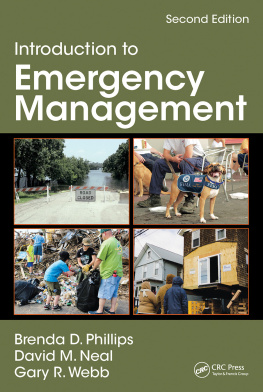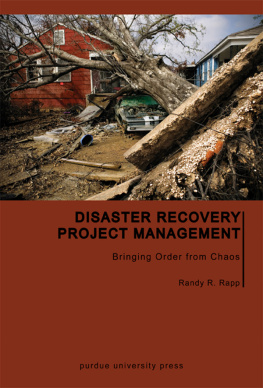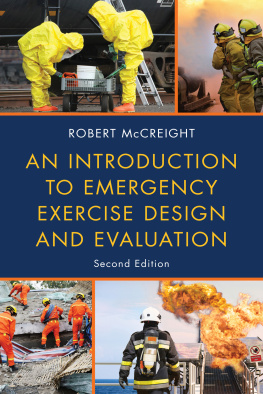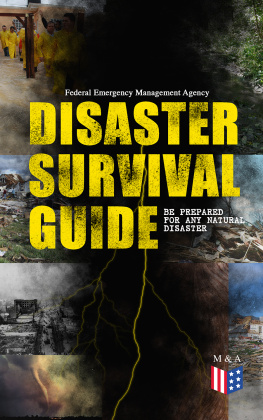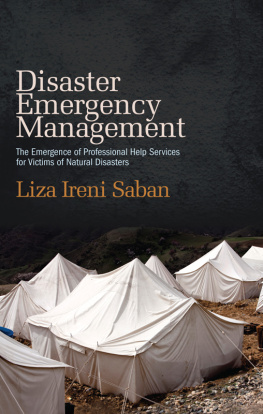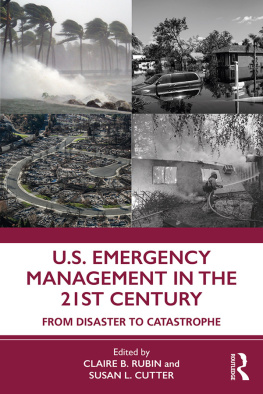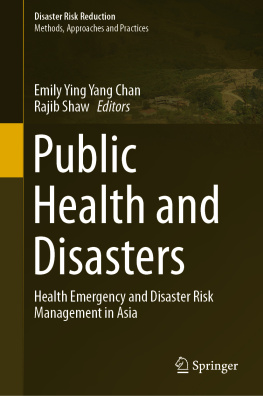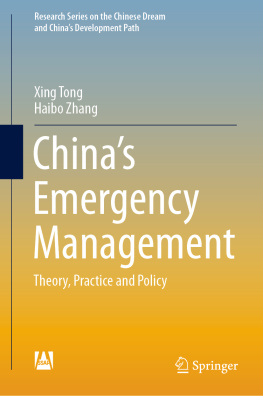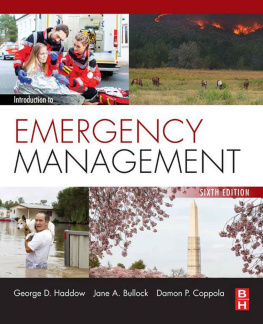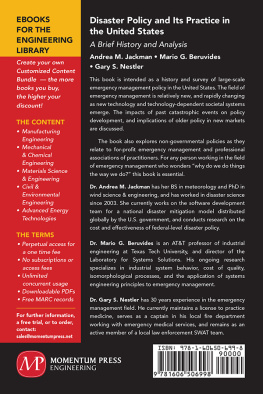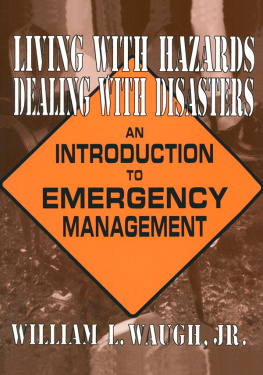Brenda Phillips - Introduction to Emergency Management and Disaster Science
Here you can read online Brenda Phillips - Introduction to Emergency Management and Disaster Science full text of the book (entire story) in english for free. Download pdf and epub, get meaning, cover and reviews about this ebook. year: 2021, publisher: Routledge, genre: Politics. Description of the work, (preface) as well as reviews are available. Best literature library LitArk.com created for fans of good reading and offers a wide selection of genres:
Romance novel
Science fiction
Adventure
Detective
Science
History
Home and family
Prose
Art
Politics
Computer
Non-fiction
Religion
Business
Children
Humor
Choose a favorite category and find really read worthwhile books. Enjoy immersion in the world of imagination, feel the emotions of the characters or learn something new for yourself, make an fascinating discovery.
- Book:Introduction to Emergency Management and Disaster Science
- Author:
- Publisher:Routledge
- Genre:
- Year:2021
- Rating:5 / 5
- Favourites:Add to favourites
- Your mark:
- 100
- 1
- 2
- 3
- 4
- 5
Introduction to Emergency Management and Disaster Science: summary, description and annotation
We offer to read an annotation, description, summary or preface (depends on what the author of the book "Introduction to Emergency Management and Disaster Science" wrote himself). If you haven't found the necessary information about the book — write in the comments, we will try to find it.
Introduction to Emergency Management and Disaster Science — read online for free the complete book (whole text) full work
Below is the text of the book, divided by pages. System saving the place of the last page read, allows you to conveniently read the book "Introduction to Emergency Management and Disaster Science" online for free, without having to search again every time where you left off. Put a bookmark, and you can go to the page where you finished reading at any time.
Font size:
Interval:
Bookmark:
- Newly commissioned insights from former students and professional colleagues involved with emergency management practice and disaster science; international policies, programs, and practices; and socially vulnerable populations.
- Significantly enriched content and coverage of new disasters and recent research, particularly the worldwide implications of climate change and pandemics.
- Pedagogical features like chapter objectives, key terms and definitions, discussion points, and resources.
- The only textbook authored by three winners of the Blanchard Award for excellence in emergency management instruction.
- Online Support Material containing instructional videos with practical information and learning objectives for the next generation of emergency managers and disaster scientists.
The Disciplines of Emergency Management and Disaster Science
Font size:
Interval:
Bookmark:
Similar books «Introduction to Emergency Management and Disaster Science»
Look at similar books to Introduction to Emergency Management and Disaster Science. We have selected literature similar in name and meaning in the hope of providing readers with more options to find new, interesting, not yet read works.
Discussion, reviews of the book Introduction to Emergency Management and Disaster Science and just readers' own opinions. Leave your comments, write what you think about the work, its meaning or the main characters. Specify what exactly you liked and what you didn't like, and why you think so.

